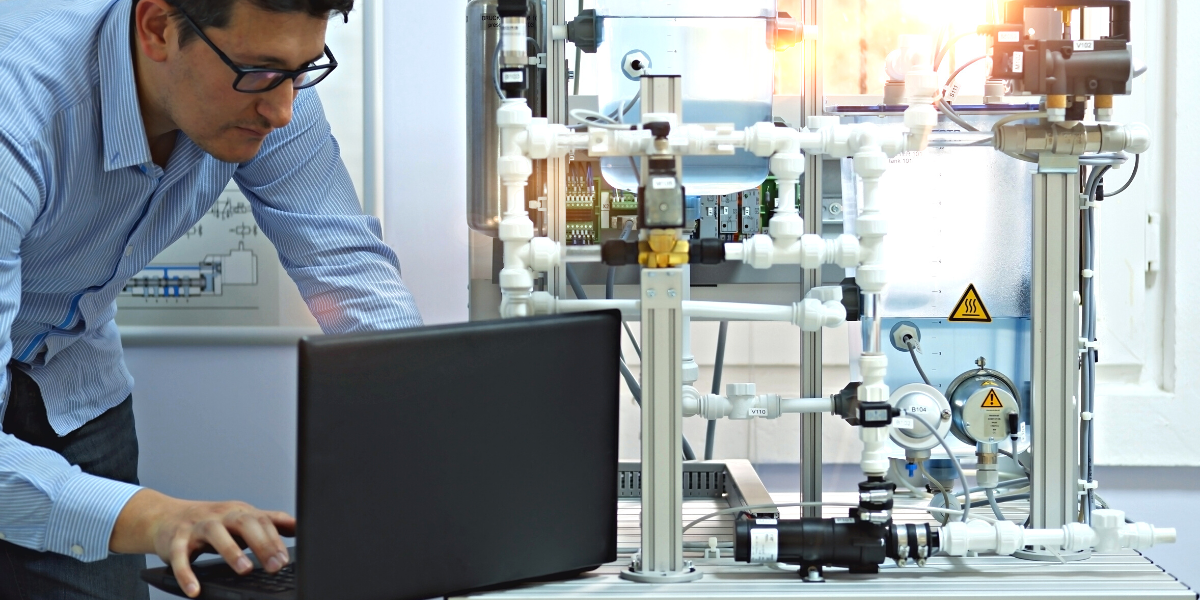What You Need to Know About Industrial Automation
Navigating the intricate landscape of industrial automation can be a daunting task, yet it's crucial for staying competitive in today's rapidly...
4 min read
![]() The InCentrik Team
Oct 24, 2022 10:50:25 AM
The InCentrik Team
Oct 24, 2022 10:50:25 AM

In today's competitive landscape, businesses need to find ways to operate more efficiently and effectively in order to stay ahead of the curve. By automating end-to-end processes, businesses can streamline operations and achieve operational excellence.
Here are eight ways that automation can benefit your business.
End-to-end automation is the process of automating all aspects of a business process from start to finish. This can include tasks such as customer order processing, invoicing, and shipping. By automating these processes, businesses can streamline their operations, while having data security. These processes improve efficiency, accuracy, and speed while reducing costs.
End-to-end automation can offer many benefits to businesses, especially in the manufacturing sector. Some of these benefits include:
1. Increased Efficiency: Automating manufacturing processes can help to eliminate errors and increase efficiency. This can lead to shorter production times and reduced costs.
2. Improved Quality: Automating quality control processes can help to ensure that products meet customer expectations. This can lead to increased customer satisfaction and loyalty.
3. Greater Flexibility: Automating manufacturing processes can give businesses the ability to quickly adapt to changes in demand. This can help businesses avoid stock outs and lost sales.
4. Reduced Costs: Automating manufacturing processes can help businesses save money on labor, materials, and energy costs.
5. Increased Safety: Automating dangerous or hazardous manufacturing processes can help to protect workers from injuries.
6. Enhanced Sustainability: Automating manufacturing processes can help businesses reduce their environmental impact. This can lead to improved sustainability practices and a smaller carbon footprint.
7. Improved Customer Service: Automating customer service processes can help businesses provide faster and more efficient service. This can lead to increased customer satisfaction and loyalty.
8. Increased Sales: Automating marketing and sales processes can help businesses generate more leads and close more sales. This can lead to increased revenue and profitability.
There are a few different ways that end-to-end automation can be implemented. One way is to use software that integrates all the different applications and systems that are required for the automation process. This can help to streamline the process and make it more efficient.
Another way to implement end-to-end automation is to use specialized hardware and software. This type of solution is often used in manufacturing and can be customized to fit the specific needs of the business. This can provide the best of both worlds by offering flexibility and customization while still being efficient.
No matter which method you choose, end-to-end automation can help to improve your business in many ways. If you are looking to increase efficiency, quality, and flexibility while reducing costs, automating your business processes is a great place to start.
Automation is already a well-known manufacturing technique, but with advances in AI and remote communication (via IoT), it will surely grow in popularity in the future. The term "automation" refers to taking recurrent operations and creating a system that performs them automatically.
For example, a pharmaceutical manufacturing plant might have an automated system for dispensing a given amount of a powdered chemical. Automation can provide numerous benefits, including mechanical precision and consistency, greater safety and decreased operating expenses.
AI is going to make automation more widespread and even more reliable. Based on the trajectory of current automation trends, here are a few predictions about what the future of manufacturing will look like.
It is now feasible to have a whole factory run by just a few people while the rest of the operation is handled automatically via machines and robots. Even the most finely tuned machine requires human interaction and correction to identify and avert production faults, however, even the most well-oiled machine requires human input and intervention to avoid manufacturing disasters.
This is where AI may shift the playing field. AI might make it feasible for production equipment to comprehend far more complex objectives than they do now. This will allow operations at a specific location to be entirely automated, with frequent remote checks from a central hub.
Data traceability refers to the ability to track the lifecycle of a particular data element within the system. It involves recording the origin of data and its movement across systems and processes. In an automated setup, traceability ensures that every action taken by the system can be audited and linked back to its source. This is particularly important in industries where compliance and quality control are paramount, such as manufacturing and healthcare.
With end-to-end automation, data traceability allows businesses to:
Monitor and improve quality: By tracking data from its origin, businesses can easily identify and rectify issues in the production line, leading to improved product quality.
Ensure regulatory compliance: Many industries are subject to stringent regulations that require detailed record-keeping. Data traceability ensures that all actions are recorded and can be audited if necessary.
Enhance decision-making: Comprehensive, traceable data enables businesses to make informed decisions based on accurate, real-time information.
Improve customer service: With complete visibility of customer interactions and transactions, businesses can provide personalized service and resolve issues quickly.
Foster innovation: With a clear view of operations, businesses can identify areas for improvement and innovation.
InCentrik is a leading provider of end-to-end automation solutions. We offer a variety of software and hardware solutions that can be customized to fit the specific needs of your business.
Our team of experts can help you to select the right solution for your business and implement it in a way that will maximize its benefits. Contact us today to learn more about our end-to-end automation solutions and how they can help your business.
What You Need to Know About Industrial Automation - Explore the essentials of industrial automation, from types and tools to the role of PLCs. Gain insights to modernize your operations.
![]() Leading the digital transformation in the manufacturing industry. We bring our customers value through automation, integration, data management, and business intelligence. We bridge the gap between what really goes on in your plant and the decision-making power you hold as an executive.
Leading the digital transformation in the manufacturing industry. We bring our customers value through automation, integration, data management, and business intelligence. We bridge the gap between what really goes on in your plant and the decision-making power you hold as an executive.
At InCentrik we automate our customers process systems, manage our customer's data (from any data source), make data available to everyone, and we bring business intelligence to the data in order for our customers to work more efficiently. Checkout our Smart Apps including the Crisis Communication App, SmartHub and SmartHub Apps OEE, Shift, PI, Rounds, and Permits.

Navigating the intricate landscape of industrial automation can be a daunting task, yet it's crucial for staying competitive in today's rapidly...

Turning raw data into actionable insights is critical for maintaining efficiency and competitiveness. InCentrik's Manufacturing Intelligence services...

In today's rapidly evolving manufacturing landscape, staying ahead of technological advancements and operational efficiencies is not just an...